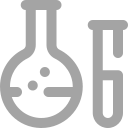
Product Description
Resveratrol (SRT 501), a natural polyphenol that possesses anti-oxidant, anti-inflammatory, cardioprotective, and anti-cancer properties. It has a wide spectrum of targets including mTOR, JAK, β-amyloid.
IC50 & Target: IC50: 0.8 μM (Adenylyl cyclase), 1 μM (IKKβ), 3.3 and 5 μM (DNA polymerase α and δ)[1]
In Vitro: Resveratrol is one of the numerous polyphenolic compounds found in several vegetal sources In the vast majority of cases, Resveratrol displays inhibitory/activatory effects in the micromolar range, which is potentially attainable pharmacologically, although targets with affinities in the nanomolar range have also been reported. Resveratrol also is a sirtuin activator[1]. MCF-7 cells are plated in DME-F12 medium supplemented with 5% FBS in the presence of increasing concentrations of Resveratrol. Control cells are treated with the same volume of vehicle only (0.1% ethanol). Resveratrol inhibits the growth of MCF-7 cells in a dose-dependent fashion. Addition of 10 μM Resveratrol results in an 82% inhibition of MCF-7 cell growth after 6 days while at 1 μM, only a 10% inhibition is observed. The cells treated with 10 μM Resveratrol have a doubling time of 60 hr whereas control cells doubled every 30 hr. Trypan blue exclusion assay shows that at concentrations of 10 μM or lower, Resveratrol does not affect cell viability (90% viable cells) whereas at 100 μM, only 50% of the cells are viable after 6 days of Resveratrol treatment. Moreover, MCF-7 cells do not undergo apoptosis after incubation with Resveratrol at concentration of 10 μM as determined by ApoAlert Annexin V Apoptosis kit[2].
In Vivo: The average tumor volume is reduced by treatment with Resveratrol at a dose of 50 mg/kg body weight (195.5±124.8 mm3; P<0.05) or 100 mg/kg body weight (81.7±70.5 mm3; P<0.001) compare with the vehicle-treated animals (315±94 mm3). There is a good correlation between the tumor volume and the tumor mass[3].
Resveratrol increases the production of nitric oxide (NO) in endothelial cells by upregulating the expression of endothelial
NO synthase (eNOS), stimulating eNOS enzymatic activity, and preventing eNOS uncoupling[7].

Information
CAS No501-36-0
FormulaC14H12O3
Clinical Informationclinicalinformation
PathwayNF-κB
Autophagy
Cell Cycle/DNA Damage
Epigenetics
Apoptosis
Anti-infection
TargetIKK
Autophagy
Mitophagy
Sirtuin
Apoptosis
Bacterial
Fungal
Antibiotic
Keap1-
Nrf2

Specifications
FormWhite to off-white (Solid)
Purity / Grade99.70%
SolubilityDMSO : 100 mg/mL (438.14 mM; Need ultrasonic)
Smilessmiles

Misc Information
Storage InstructionPowder: -20°C for 3 years; 4°C for 2 years
In solvent : -80°C for 6 months ; -20°C for 1 month
Alternative NamesSRT 501;trans-Resveratrol;1,3-Benzenediol, 5-[(1E)-2-(4-hydroxyphenyl)ethenyl]-
Observed Molecular Weight228.24
References[1]. Pirola L, et al. Resveratrol: one molecule, many targets. IUBMB Life. 2008 May;60(5):323-32.
[2]. Lu R, et al. Resveratrol, a natural product derived from grape, exhibits antiestrogenic activity and inhibits the growth of human breast cancer cells. J Cell Physiol. 1999 Jun;179(3):297-304.
[3]. Lee MH, et al. Resveratrol suppresses growth of human ovarian cancer cells in culture and in a murine xenograft model: eukaryotic elongation factor 1A2 as a potential
target. Cancer Res. 2009 Sep 15;69(18):7449-58.
[4]. Du LL, et al. Activation of sirtuin 1 attenuates cerebral ventricular streptozotocin-induced tau hyperphosphorylation and cognitive injuries in rat hippocampi. Age (Dordr). 2014 Apr;36(2):613-23.
[5]. Smutny T, et al. Resveratrol as an inhibitor of pregnane X receptor (PXR): another lesson in PXR antagonism. J Pharmacol Sci. 2014;126(2):177-8.
[6]. Eun Nim Kim,et al. Resveratrol, an Nrf2 activator, ameliorates aging-related progressive renal injury. Aging (Albany NY). 2018 Jan; 10(1): 83–99.
[7]. Huige Li, et al. Resveratrol and Vascular Function. Int J Mol Sci. 2019 Apr 30;20(9):2155.